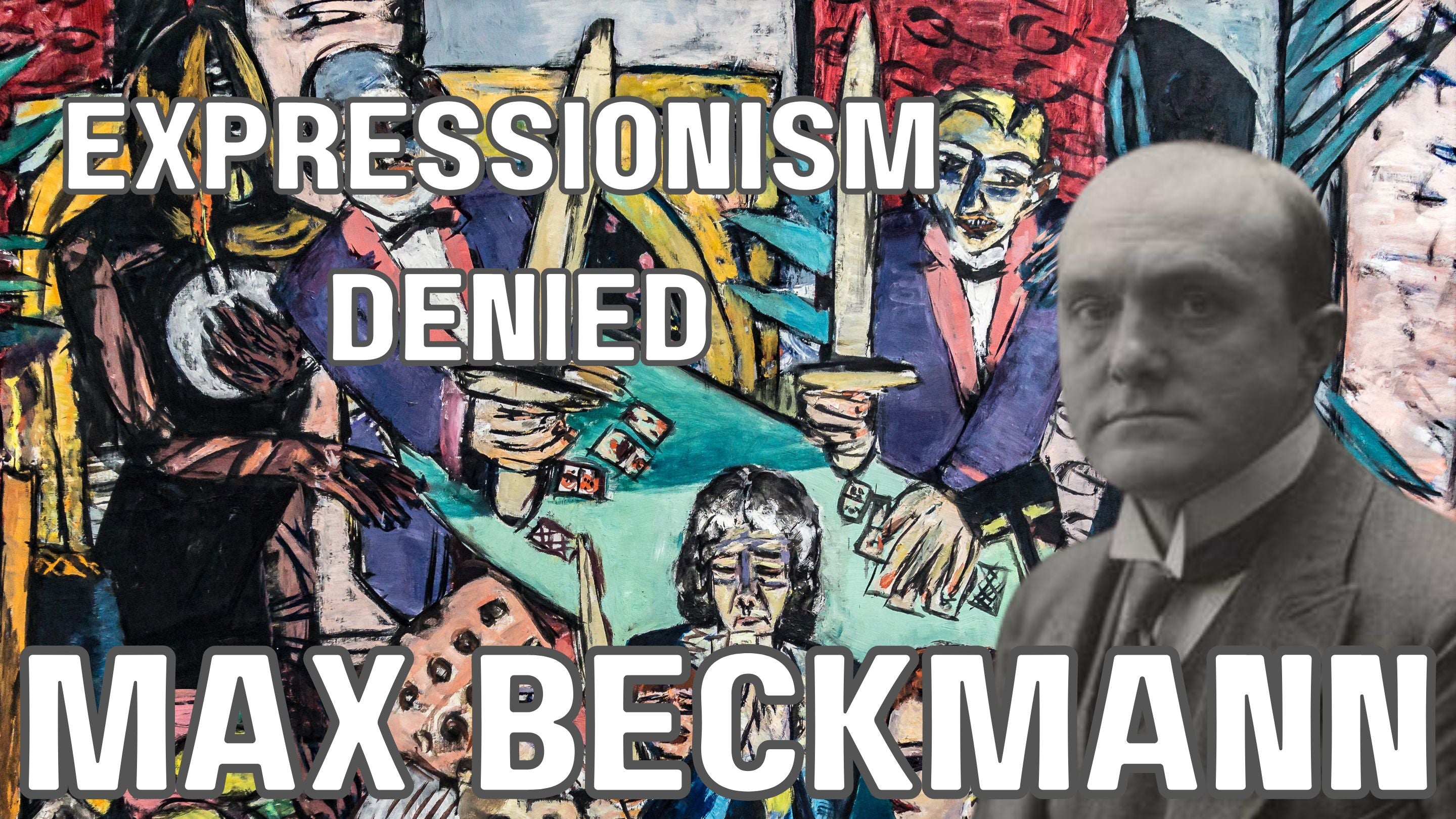Table of Contents:[hide]
Max Beckmann, a name that resonates through the corridors of art history as a beacon of expressionism and profound introspection. Born on February 12, 1884, Beckmann's life unfolded against the backdrop of tumultuous times, leaving an indelible mark on the canvas of art.
Life of Max Beckmann
Beckmann's artistic journey began in Leipzig, Saxony, where he immersed himself in the world of painting, printmaking, sculpture, and writing. While he is often associated with Expressionism, Beckmann's style transcended mere classification. He delved into the depths of human emotion, rejecting the label of a movement and carving his own path in the art world.
The Evolution of Beckmann's Art
From his early works depicting circus performers to the haunting imagery of his later years, Beckmann's art underwent a profound evolution. Influenced by his experiences in World War I and the socio-political landscape of his time, his paintings became increasingly explicit, blending brutal realism with social commentary. Themes of terror, redemption, and the mysteries of fate permeated his canvases, offering a mirror to the agonies of Europe in the 20th century.
Beckmann's Legacy
Beckmann's impact extended far beyond his lifetime, influencing a generation of artists both in Europe and the United States. His rejection of non-representational painting in favor of figurative art paved the way for a new wave of expressionism. Despite facing suppression by the Nazi regime, Beckmann's spirit remained unbroken, and his works continued to resonate with audiences around the world.
Rediscovering Beckmann's Works
In recent years, there has been a renewed interest in Beckmann's art, with major retrospectives and exhibitions showcasing his oeuvre. His paintings, once relegated to the sidelines, now command attention and admiration in museums and galleries worldwide. The discovery of previously unknown works only adds to the mystique surrounding this enigmatic artist.
Beckmann's Influence on the Art Market
While Beckmann may not have achieved household name status during his lifetime, his impact on the art market is undeniable. His paintings fetch millions at auction, with self-portraits often commanding the highest prices. Beckmann's ability to capture the human experience with such raw intensity ensures that his legacy will endure for generations to come.
Conclusion
As we reflect on the life and work of Max Beckmann, we are reminded of the power of art to transcend boundaries and speak to the human soul. His paintings serve as a testament to the resilience of the human spirit in the face of adversity, offering solace and inspiration to all who encounter them.
Max Beckman Prints and Canvas Panels
Prints and ready to hang canvas panels of Max Beckmann's paintings are available in a range of sizes with fast worldwide delivery.
Max Beckmann FAQ's
-
Who was Max Beckmann?
- Max Beckmann (February 12, 1884 – December 27, 1950) was a German painter, draftsman, printmaker, sculptor, and writer known for his contributions to expressionism and figurative art.
-
What art movement was Max Beckmann associated with?
- While Max Beckmann is often associated with expressionism, he rejected both the term and the movement. He was also associated with the New Objectivity movement in the 1920s.
-
What themes did Max Beckmann explore in his art?
- Max Beckmann's art explored a wide range of themes, including the human condition, existentialism, social criticism, and the horrors of war. His works often delved into themes of terror, redemption, and the mysteries of fate.
-
What was Max Beckmann's style of painting?
- Beckmann's style of painting evolved over time, ranging from more academic and correct depictions in his early years to a distortion of figure and space in his later works. He employed a figurative style, often incorporating symbolic elements and expressive brushwork.
-
Where did Max Beckmann live and work throughout his life?
- Beckmann was born in Leipzig, Saxony, Germany. He lived and worked in various places throughout his life, including Frankfurt, Amsterdam (during his self-imposed exile), and later in the United States, primarily in St. Louis and New York City.
-
What was the significance of Max Beckmann's self-portraits?
- Max Beckmann painted numerous self-portraits throughout his life, which are often compared in intensity and quantity to those of Rembrandt and Picasso. These self-portraits serve as a reflection of Beckmann's inner struggles and artistic evolution.
-
How did Max Beckmann's art evolve over time?
- Beckmann's art underwent significant evolution, influenced by his experiences in World War I, the rise of Nazism in Germany, and his subsequent exile. His style transitioned from more conventional depictions to more explicit and haunting imagery, reflecting the changing socio-political landscape.
-
What was the impact of Max Beckmann's art on the art world?
- Max Beckmann's art had a profound impact on subsequent generations of artists, both in Europe and the United States. His rejection of non-representational painting and his exploration of the human experience continue to inspire artists and art enthusiasts worldwide.
-
Where can one view Max Beckmann's artworks?
- Max Beckmann's artworks are displayed in museums and galleries around the world. Major retrospectives and exhibitions have been held in prestigious institutions such as the Museum of Modern Art in New York and the Centre Pompidou in Paris.
-
What is the current market value of Max Beckmann's paintings?
- Beckmann's paintings are highly sought after by collectors, and they often command high prices at auction. His self-portraits, in particular, are known to fetch millions of dollars. Notably, in recent years, several of his works have set new records at auction houses.




